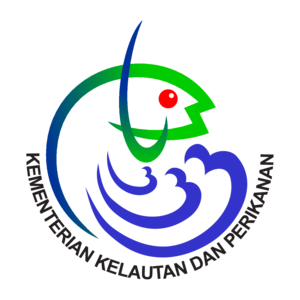Aktivitas Antibakteri Ekstrak Karang Lunak Sinularia Sp. dengan Metode Broth-Dilution
Abstract
Karang lunak merupakan bagian dari ekosistem terumbu karang, yang mengandung senyawa bioaktif dan dapat berperan sebagai alat pertahanan diri serta memiliki kemampuan sebagai senyawa antibakteri. Penelitian ini bertujuan untuk menginvestigasi potensi ekstrak karang lunak Sinularia sp. sebagai antibakteri dengan metode broth-dilution. Karang Lunak Sinularia sp. dikoleksi dari perairan Desa Kabonga Besar, Sulawesi Tengah, dan dimaserasi dengan diklorometana : methanol. Ekstrak Sinularia sp. dilakukan pengujian skrining metabolit kimia dan pengujian antibakteri dengan metode broth-diluttion. Hasil skrining ekstrak Sinularia sp. terdeteksi senyawa metabolit flavonoid, saponin, alkaloid dan steroid. Ekstrak Sinularia sp. memberikan pengaruh terhadap total koloni Escherichia coli dan Pseudomonas aeruginosa. Ekstrak Sinularia sp. dapat menghambat pertumbuhan E. coli dengan konsentrasi minimum 1.76 ± 0.10 mg/mL, sedangkan pada P. aeruginosa konsentrasi minimum yang dibutuhkan 1.85 ± 0.14 mg/mL. Konsentrasi bunuh minimum ekstrak Sinularia sp. yang dibutuhkan dalam membunuh E. coli, yaitu 7.06 ± 0.42 mg/mL, sedangkan pada P. aeruginosa, yaitu 7.38 ± 0.54 mg/mL. Penelitian ini disimpulkan bahwa senyawa bioaktif dari metabolit ekstrak karang lunak Sinularia sp. berpotensi sebagai senyawa antibakterial terhadap E. coli dan P. aeruginosa. Oleh karena itu, perlu diinvestigasi lebih lanjut dari identifikasi profil bioaktif karang lunak Sinularia sp.
Keywords
Full Text:
PDFReferences
Alhaddad, Z. A., Wahyudi, D., & Tanod, W. A. (2019). Bioaktivitas antibakteri dari ekstrak daun mangrove Avicennia sp. Jurnal Kelautan: Indonesian Journal of Marine Science and Technology, 12(1), 12–22.
Badan Standarisasi Nasional [BSN]. (2006). Penentuan Angka Lempeng Total. SNI-01-2332.3-2006. Badan Standarisasi Nasional. Jakarta.
Bloomfield, S. F. (1991). Methods for assessing antimicrobial activity. In S. P. Denyer & W. B. Hugo (Ed.). Mechanism of Action of Chemical Biocides Their Study and Exploitation (pp.256–258). London: Blackwell Scientific Publication.
Blunt, J. W., Copp, B. R., Keyzers, R. A., Munro, M. H. G., & Prinsep, M.R. (2013). Marine natural products. Natural Product Report, 30(2), 237–323.
Chasanah, E. (2008). Marine biodiscovery research in Indonesia: challenges and rewards. Journal of Coastal Development, 12(1), 1–12.
Chen, W., Li, Y., & Guo, Y. (2012). Terpenoids of Sinularia soft corals: chemistry and bioactivity. Acta Pharmaceutica Sinica B, 2(3), 227–237.
Cheng, S. Y., Huang, K. J., Wang, S. K., Wen, Z. H., Chen, P. W., & Duh, C. Y. (2010). Antiviral and anti-inflammatory metabolites from the soft coral Sinularia capillosa. Journal of Natural Products, 73(4), 771–775.
Colin, P. L. & Arneson, C. (1995). Tropical pacific invertebrates. A field guide to the marine invertebrates occurring on tropical pacific coral reefs, seagrass beds and mangrove. California: Coral reef Press.
Cowan, M. M. (1999). Plant products as antimicrobial agents. Clinical Microbiology Reviews, 12(4), 564–582.
Dewanto, D. K., Finarti, Hermawan, R., Ndobe, S., Haryadi, P. H., & Tanod, W. A. (2019). Aktivitas antioksidan ekstrak karang lunak asal Teluk Palu, Sulawesi Tengah, Indonesia. Jurnal Pengolahan dan Bioteknologi Kelautan dan Perikanan, 14(2), 163–178.
Dobretsov, S., Al-Wahaibi, A. S. M., Lai, D., Al-Sabahi, J., Claereboudt, M., Proksch, P., & Soussi, B. (2015). Inhibition of bacterial fouling by soft coral natural products. International Biodeterioration & Biodegradation, 98, 53–58.
European Committee for Antimicrobial Susceptibility Testing [EUCAST]. (2003). Determination of minimum inhibitory concentrations (MICs) of antibacterial agents by broth dilution. Clinical Microbiology and Infection, 9(8), 9–15.
Fabricus, K., & Alderslade, P. (2001). Soft Corals and sea fans, a comprehensive guide to the tropical shallow-water genera of the central-west Pasific, The Indian Ocean and the Red Sea. Queensland: Australian Institute of Marine Science.
Fattorusso, E., Romano, A., Taglialatela-Scafati, O., Janib Achmad, M., Bavestrello, G., & Cerrano, C. (2008). Lobozoanthamine, a new zoanthamine-type alkaloid from the Indonesian soft coral Lobophytum sp. Tetrahedron Letters, 49(14), 2189–2192.
Fattorusso, E., Luciano, P., Putra, M. Y., Taglialatela-Scafati, O., Ianaro, A., Panza, E., & Cerrano, C. (2011). Chloroscabrolides, chlorinated norcembranoids from the Indonesian soft coral Sinularia sp. Tetrahedron, 67(41), 7983–7988.
Harborne, J. B. (1998). Phytochemical Methods; A Guide to Modern Techniques of Plant Analysis. (Vol. 3). London New York: Chapman and Hall.
Handayani, D., Edrada, R. A., Proksch, P., Wray, V., Witte, L., Van Ofwegen, L., & Kunzmann, A. (1997). New oxygenated sesquiterpenes from the Indonesian soft coral Nephthea chabrolii. Journal of Natural Products, 60(7), 716–718.
Hermawan, A., Eliyani, H., & Tyasningsih, W. (2007). Pengaruh Ekstrak Daun Sirih (Piper betle L.) terhadap Pertumbuhan Staphylococcus aureus dan Escherichia coli dengan Metode Difusi Disk. Tesis. Fakultas Kedokteran Hewan: Universitas Airlangga.
Higa, T., Tanaka, J., Ohtani, I. I., Musman, M., Roy, M. C., & Kuroda, I. (2001). Bioactive compounds from coral reef invertebrates. Pure and Applied Chemistry, 73(3), 589-593.
Ianora, A., Boersma, M., Casotti, R., Fontana, A., Harder, J., Hoffmann, F., Pavia, H., Potin, P., Poulet, S.A & Toth, G. (2006). New trends in marine chemical ecology. Estuaries and Coasts, 29(4), 531–551.
Jia, R., Guo, Y., Mollo, E., & Cimino, G. (2005). Natural product research: formerly natural product letters two new 19-oxygenated polyhydroxy steroids from the Hainan soft coral Sinularia sp. Natural Product Research, 19(December), 789–794.
Khatab, R. M. A., Ali, A. E., El-Nomary, B., & Temraz, T.A. (2008). Screening for antibacterial and antifungal activities some selected marine organisms of the Suez Canal and Red Sea. Egyptian Journal of Experimental Biology (Zoology), 4(8), 223–228.
Kusmayati & Agustini, N. W. (2007). Uji aktivitas senyawa antibakteri dari mikroalga (Porphyridium cruentum). Biodiversity, 8(1), 48–53.
Liang, L. F., & Guo, Y. W. (2013). Terpenes from the soft corals of the genus Sarcophyton: chemistry and biological activities. Chemistry and Biodiversity, 10(12), 2161–2196.
Liang, L. F., Wang, X. J., Zhang, H. Y., Liu, H. L., Li, J., Lan, L. F., & Guo, Y. W. (2013). Bioactive polyhydroxylated steroids from the Hainan soft coral Sinularia depressa Tixier-Durivault. Bioorganic & Medicinal Chemistry Letters, 23(5), 1334-1337.
Lu, Y., Huang, C. Y., Lin, Y., Wen, Z., Kuo, Y., Chiang, M. Y., & Su, J. H. (2008). Anti-inflammatory cembranoids from the soft corals Sinularia querciformis and Sinularia granosa. Journal of Natural Products, 71(10), 1754–1759.
Manuputty, A. E. W. (2002). Karang Lunak (Soft Coral) Perairan Indonesia (Buku I: Laut Jawa dan Selat Sunda). Jakarta: Pusat Penelitian Oseanografi-LIPI.
Minh, C. V., Kiem, P. V., Nhiem, N. X., Cuong, N. X., Thao, N. P., Nam, N. H., Anh, H. L. T., Tung, D. C., Thuy, D. T. T., Kang, H. K., Jang, H. D., & Kim, Y. H. (2011). Cytotoxic and antioxidant activities of diterpenes and sterols from the Vietnamese soft coral Lobophytum compactum. Bioorganic and Medicinal Chemistry Letters, 21(7), 2155–2159.
Murniasih, T. (2005). Substansi kimia untuk pertahanan diri dari hewan laut tak bertulang belakang. Oseana, 30(2), 19–27.
Naidu, A. S. (2002). Natural Food Antimicrobial System. USA: CRC Press.
Putra, M. Y., Ianaro, A., Panza, E., Bavestrello, G., Cerrano, C., Fattorusso, E., & Taglialatela-Scafati, O. (2012). Sinularioside, a triacetylated glycolipid from the Indonesian soft coral Sinularia sp., is an inhibitor of NO release. Bioorganic & Medicinal Chemistry Letters, 22(8), 2723–2725.
Putra, M. Y., Murniasih, T., Swasono, R. T., Wibowo, J. T., Saputri, A. N. C., Widhiana, M. R., & Arlyza, I. S. (2016a). Secondary metabolites and their biological activities in Indonesian soft coral of the genus Lobophytum. Asian Pacific Journal of Tropical Biomedicine, 6(11), 909–913.
Putra, M. Y., Wibowo, J. T., Murniasih, T., & Rasyid, A. (2016b). Evaluation of antibacterial activity from Indonesian marine soft coral Sinularia sp. American Institute of Physics Conference Proceedings, 1744, 020039-1-020039–5.
Putz, A & Proksch, P. (2009). Chemical defence in marine ecosystems. In W. Michael (Ed.), Annual Plant Reviews, Volume 39: Functions and Biotechnology of Plant Secondary Metabolites (pp. 162-213). New Jersey: Blackwell Publishing Ltd.
Rachmaniar, R. (1995). Penelitian produk alam laut skreening substansi bioaktif. Laporan Penelitian Tahun Anggaran 1994/1995, Puslitbang Oseanologi. Jakarta: Lembaga Ilmu Pengetahuan Indonesia.
Radić, N., & Strukelj, B. (2012). Endophytic fungi: the treasure chest of antibacterial substances. Phytomedicine: International Journal of Phytotherapy and Phytopharmacology, 19(14), 1270–1284.
Rajaram, S., Ramulu, U., Ramesh, D., Srikanth, D., Bhattacharya, P., Prabhakar, P., & Navath, S. (2013). Anti-cancer evaluation of carboxamides of furano-sesquiterpene carboxylic acids from the soft coral Sinularia kavarattiensis. Bioorganic & Medicinal Chemistry Letters, 23(23), 6234–6238.
Ravikumar, S., Gnanadesigan, M., Suganthi, P., & Ramalakshmi, A. (2010). Antibacterial potential of chosen mangrove plants against isolated urinary tract infectious bacterial pathogens. International Journal of Medicine and Medical Sciences, 2(3), 94–99.
Riyadi, P. H., Wahyudi, D., & Tanod, W. A. (2019). Effects of dichloromethane Sarcophyton spp. extract on the lipopolysaccharide-induced expression of nuclear factor-kappa B and inducible nitric oxide synthase inmice. Veterinary World, 12(12), 1897-1902.
Rozirwan, Bengen, D.G., Zamani, N.P., Effendi, H., & Chaidir. (2014). Screening on the potential bioactive compounds of antibacterial activity in soft coral collected from South Bangka island waters and Lampung bay. Journal of Tropical Marine Science and Technology, 6(2), 283–295.
Salanggon, A., & Finarti, F. (2016). Struktur populasi rekrut karang hermatifik pada metode fish home di Teluk Palu. Kauderni : Journal of Fisheries, Marine and Aquatic Science, 1(1), 33-38. Diakses 28 April 2020, dari https://jurnal.stplpalu.ac.id/index.php/kauderni/article/view/10
Scheuer, J. S. (1994). Produk alami lautan : dari segi kimiawi dan biologi, jilid 1. Terj dari Marine Natural Products (Koensoemardiyah, Penerjemah). Semarang: IKIP Semarang Press.
Shaaban, M., Shaaban, K. A., & Ghani, M. A. (2013). Hurgadacin: a new steroid from Sinularia polydactyla. Steroids, 78(9), 866–873.
Sheu, J. H., Ahmed, A. F., Shiue, R. T., Dai, C. F., & Kuo, Y. H. (2002). Scabrolides A-D, four new norditerpenoids isolated from the soft coral Sinularia scabra. Journal of Natural Product, 65(12), 1904–1908.
Sun, P., Meng, L. Y., Tang, H., Liu, B. S., Li, L., Yi, Y., & Zhang, W. (2012). Sinularosides A and B, bioactive 9,11-secosteroidal glycosides from the South China sea soft coral Sinularia humilis Ofwegen. Journal of Natural Products, 75, 1656–1659.
Tanod, W. A., Mangindaan, R. E. P., & Kapojos, M. (2015). Antimitotic activity from soft coral genus Sinularia extracts. OmniAkuatika, 11(2), 41–49.
Tanod, W. A., Aristawati, A. T., Putra, M. Y., & Muliadin. (2018). Soft coral (Sinularia sp.) extracts with antibacterial activity. OmniAkuatika, 14(1), 108–117.
Tanod, W. A., Yanuhar, U., Maftuch, Wahyudi, D., & Risjani, Y. (2019a). DPPH scavenging property of bioactives from soft corals origin Palu bay, Central Sulawesi, Indonesia. IOP Conference Series: Earth and Environmental Science, 236(1), 012121.
Tanod, W. A., Dewanto, D. K., Ndobe, S., Riyadi, P. H., & Putra, M. Y. (2019b). Screening of antibacterial and antioxidant activity from the soft corals Sinularia sp. and Sarcophyton sp. Origin Palu Bay, Central Sulawesi, Indonesia. Squalen Bulletin of Marine and Fisheries Postharvest and Biotechnology, 14(2), 73–83.
Tanod, W. A., Yanuhar, U., Maftuch, Putra, M. Y., & Risjani, Y. (2019c). Screening of NO inhibitor release activity from soft coral extracts origin Palu bay, Central Sulawesi, Indonesia. Anti-Inflammatory & Anti-Allergy Agents in Medicinal Chemistry, 18(2), 126–141.
Tseng, Y. J., Wang, S. K., & Duh, C. Y. (2013). Secosteroids and norcembranoids from the soft coral Sinularia nanolobata. Marine Drugs, 11(9), 3288–3296.
Vickery, M. L., & Vickery, B. (1981). Secondary Plant Methabolism. London: The Macmillan Press.
Wanda, E., Sadarun, B., & Rahmadani. (2018). Keanekaragaman dan kepadatan karang lunak di perairan Waworaha kecamatan Soropia. Sapa Laut, 3(1), 9-15.
Wang, S. K., Hsieh, M. K., & Duh, C. Y. (2012). Three new cembranoids from the Taiwanese soft coral Sarcophyton ehrenbergi. Marine Drugs, 10(7), 1433–1444.
Wiegand, I., Hilpert, K., Hancock, R. E. (2008). Agar and broth dilution methods to determine the minimal inhibitory concentration (MIC) of antimicrobial substances. Nature Protocols, 3(2), 163‐175.
Yang, L., Wen, K. S., Ruan, X., Zhao, Y. X., Wei, F., & Wang, Q. (2018). Response of plant secondary metabolites to environmental factors. Molecules, 23(762), 1-26.
DOI: http://dx.doi.org/10.15578/jkn.v15i3.9057
Copyright (c) 2020 Jurnal Kelautan Nasional
Copyright of Jurnal Kelautan Nasional (p-ISSN 1907-767X, e-ISSN 2615-4579)
Pusat Riset Kelautan
Badan Riset dan Sumberdaya Manusia Kelautan dan Perikanan
Kementerian Kelautan dan Perikanan
Index by
 Jurnal Kelautan Nasional
Jurnal Kelautan Nasional
















